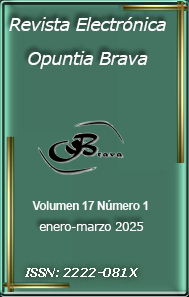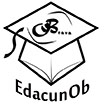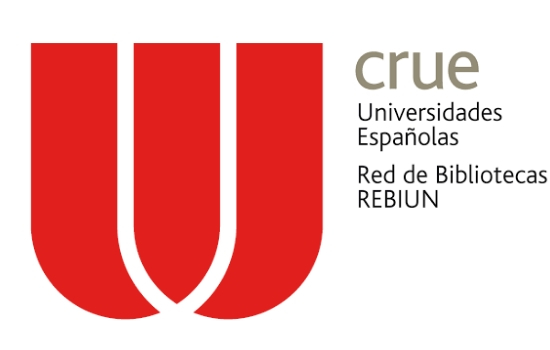Innovación en ingeniería de tejidos para la restauración cardiaca postinfarto
Palabras clave:
Ingeniería de tejidos, Infarto de miocardio, Regeneración cardíacaResumen
La ingeniería de tejidos se presenta como un enfoque innovador para restaurar el tejido cardíaco tras un infarto de miocardio, combinando ingeniería, biología y medicina. La integración de biomateriales, células madre y factores bioquímicos busca promover la regeneración cardíaca y mejorar la recuperación funcional. Las enfermedades cardiovasculares son la principal causa de mortalidad a nivel global, y el infarto de miocardio es un grave problema de salud pública en Ecuador, con más de 36,000 muertes registradas entre 2019 y 2021. El objetivo del presente trabajo de investigación es analizar el impacto de biomateriales utilizados en ingeniería de tejidos para la restauración del miocardio después de un infarto, centrándose en su biocompatibilidad y capacidad para facilitar la regeneración del tejido examinando el rol de las células madre. Para su confección se realizó una revisión sistemática de carácter cualitativa, se utilizó la técnica documental mediante una revisión bibliográfica de artículos y publicaciones de carácter científico, sobre la literatura científica publicada en áreas asociadas a la cardiología, medicina e ingeniería de tejidos. El estudio contribuye a la reparación del tejido cardíaco y su integración en las matrices de ingeniería de tejidos, además de identificar desafíos y oportunidades: que podrían mejorar los resultados de los pacientes con infarto de miocardio. Se destacan aplicaciones como los parches cardíacos bioingenierizados, que proporcionan soporte mecánico y fomentan la angiogénesis. La comprensión de la fisiopatología del infarto y el diseño de estrategias innovadoras son cruciales para mejorar la salud cardiovascular y la calidad de vida de los pacientes.
Descargas
Citas
Arslan, F., Lai, R. C., Smeets, M. B., Akeroyd, L., Choo, A., Aguor, E. N. E., et al. (2013). Mesenchymal stem cell-derived exosomes increase ATP levels, decrease oxidative stress and activate PI3K/Akt pathway to enhance myocardial viability and prevent adverse remodeling after myocardial ischemia/reperfusion injury. Stem Cell Research, 10(3), 301–312. http://doi.org/10.1016/j.scr.2013.01.002
Basara, G., Bahcecioglu, G., Ozcebe, S. G., Ellis, B. W., Ronan, G. & Zorlutuna, P. (2022). Myocardial infarction from a tissue engineering and regenerative medicine point of view: A comprehensive review on models and treatments. Biophysics Reviews, 3(3). https://doi.org/10.1063/5.0093399
Calero Moscoso, C. (2023). Diagnóstico y Tratamiento de la Enfermedad Cerebro Vascular Aguda Isquémica. Rev. CAMbios-HECAM, 22(2), 1-17. https://doi.org/10.36015/cambios.v22.n2.2023.929
Chachques, J. C., Herreros, J., Trainini, J. C., Lago, N., Díez-Solórzano, L., Tascón, V. y Genovese, J. (2011). Ingeniería tisular y miocardio bioartificial. Cirugía Cardiovascular, 18(3), 217-224. https://doi.org/10.1016/S1134-0096(11)70057-2
Chen, C. H., Chang, M. Y., Wang, S. S. y Hsieh, P. C. (2014). Injection of autologous bone marrow cells in hyaluronan hydrogel improves cardiac performance after infarction in pigs. American Journal of Physiology - Heart and Circulatory Physiology, 306(7), H1078–H1086. https://doi.org/10.1152/ajpheart.00801.2013
Choi, Y. C., Choi, J. S., Kim, B. S., Kim, J. D., Yoon, H. I. y Cho, Y. W. (2012). Decellularized extracellular matrix derived from porcine adipose tissue as a xenogeneic biomaterial for tissue engineering. Tissue Eng Part C Methods, 18(11), 866-876. https://pubmed.ncbi.nlm.nih.gov/22559904/
Coronel, K. y Núñez, L. (2022). Aplicación de la ingeniería de tejidos en el desarrollo de válvulas cardiacas y miocardio. [Tesis de pregrado, Universidad Técnica de Ambato]https://repositorio.uta.edu.ec/bitstream/123456789/34966/1/BQ%20307.pdf
Espinosa-Yépez, K. R. y García-Cevallos, M. P. (2023). Infarto agudo de miocardio en Ecuador: carga de la enfermedad y distribución geográfica. Revista MetroCiencia, 32(3), 20-7. https://doi.org/10.47464/MetroCiencia/vol31/3/2023/18-27
García Muñoz, F., Crespo Ferrer, P. V. y García López, J. M. (2013). Ingeniería tisular cardiaca. Actualidad Médica, 98(789), 101-105. https://digibug.ugr.es/handle/10481/36353?show=full
Gunata, M. y Parlakpinar, H. (2021). A review of myocardial ischaemia/reperfusion injury: pathophysiology, experimental models, biomarkers, genetics and pharmacological treatment. Cell biochemistry and function, 39(2),190-217. https://10.1002/cbf.3587
Instituto Nacional de Estadísticas y Censos (2023). 01 N°-01-2023-ECEH Registro Estadístico de camas y egresos hospitalarios. Dirección de Estadísticas Sociodemográficas. https://www.ecuadorencifras.gob.ec/documentos/web-inec/Estadisticas_Sociales/Camas_Egresos_Hospitalarios/Cam_Egre_Hos_2022/Boletin_tecnico_ECEH_2022.pdf
Katili, P.A., Karima, A.P., Azwani, W. et al. (2023). Application of Human Induced Pluripotent Stem Cells for Tissue Engineered Cardiomyocyte Modelling. Regen. Eng. Transl. Med, 9, 431–446. https://doi.org/10.1007/s40883-023-00294-1
Kitsuka, T., Takahashi, F., Reinhardt, J., Watanabe, T., Ulziibayar, A., Yimit, A., Kelly, J. y Shinoka, T. (2022). Advances in Cardiac Tissue Engineering. Rev. Bioengineering, 9(11). 696. https://doi.org/10.3390/bioengineering9110696
Kleindorfer, D. O., Towfighi, A., Chaturvedi, S., Cockroft, K.M., Gutierrez, J., Lombardi-Hill, D., Kamel, H., Kernan, W.N., Kittner, S.J.,
Leira, E.C., Lennon, O., Meschia, J. F., Nguyen, T.N., Pollak, P. M., Santangeli, P., Sharrief, A. Z., Smith, Tanya N. Turan, T. D., Williams, L. S. (2021). 2021 Guideline for the Prevention of Stroke in Patients With Stroke and Transient Ischemic Attack: A Guideline From the American Heart Association/American Stroke Association. AHA/ASA Guideline Stroke, 52(7). https://doi.org/10.1161/STR.0000000000000375
Lai, R. C., Arslan, F., Lee, M. M., Sze, N. S. K., Choo, A. y Chen, T. S. (2010). Exosome secreted by MSC reduces myocardial ischemia/reperfusion injury. Stem Cell Research, 4(3), 214-222. http://doi.org/10.1016/j.scr.2009.12.003
Lee, A., Hudson, A. R., Shiwarski, D. J., Tashman, J. W., Hinton, T. J., Yerneni, S., Bliley, J. M., Campbell, P. G. y Feinberg, A. W. (2019). 3D bioprinting of collagen to rebuild components of the human heart. Science, 365, 482–487. https://doi.org/10.1126/science.aav9051
Li, M., Wu, H., Yuan, Y., Hu, B. y Gu, N. (2021). Recent fabrications and applications of cardiac patch in myocardial infarction treatment. Rev. View, 03, 20200153. https://10.1002/VIW.20200153
Li, Z. y Guan, J. (2011). Hydrogels for cardiac tissue engineering. Polymers, 3(2), 740-761. https://doi.org/10.3390/polym3020740
Lopez-Jaramilo, P. & Lopez-Lopez J. (2022). Factores de riesgo y muerte cardiovascular en América del Sur. Rev. Clínica e Investigacion en arteriosclerosis, 35(4). 195-200. 10.1016/j.arteri.2022.12.001
Lunkenheimer, P. P., Redmann, K., Westermann, P., Rothaus, K., Cryer, C. W., Niederer, P. et al. (2006). The myocardium and its fibrous matrix working in concert as a spatially netted mesh: A critical review of the purported tertiary structure of the ventricular mass. European Journal of
Cardio-Thoracic Surgery, 29(Suppl 1), S41-S49.
Maiullari, F., Costantini, M., Milan, M., Pace, V., Chirivi, M., Maiullari, S., Rainer, A., Baci, D., Marei, H. E., Seliktar, D. (2018). A multi-cellular 3D bioprinting approach for vascularized heart tissue engineering based on HUVECs and iPSC-derived cardiomyocytes. Scientific Reports, 8, 13532. https://doi.org/10.1038/s41598-018-31848-x
Miyahara, Y., Nagaya, N., Kataoka, M., Yanagawa, B., Tanaka, K., Hao, H., Ishino, K., Ishida, H., Shimizu, T., Kangawa, K., Sano, S., Okano, T.,
Kitamura, S., y Mori, H. (2006). Monolayered mesenchymal stem cells repair scarred myocardium after myocardial infarction. Nature Medicine, 12(4), 459-465. https://doi.org/10.1038/nm1390
Organización Mundial de la Salud (OMS, 2024). Enfermedades cardiovasculares. https://www.who.int/es/health-topics/cardiovascular-diseases#tab=tab_2
Organización Panamericana de Salud (OPS, 2021). La carga de las enfermedades cardiovasculares en la Región de las Américas, 2000-2019. Portal de Datos de NMH. https://www.paho.org/es/enlace/carga-enfermedades-cardiovasculares
Pomeroy, J. E., Helfer, A. & Bursac, N. (2020). Biomaterializing the promise of cardiac tissue engineering. Rev. Biotechnology advances, 42. 107353. 10.1016/j.biotechadv.2019.02.009
Roacho-Pérez, J. A., Garza-Treviño, E. N., Moncada-Saucedo, N. K., Carriquiry-Chequer, P. A., Valencia-Gómez, L. E., Matthews, E. R., Gómez-Flores, V., Simental-Mendía, M., Delgado-Gonzalez, P., Delgado-Gallegos, J. L. et al. (2022). Artificial Scaffolds in Cardiac Tissue Engineering. Rev. Life, 12, 1117. https://doi.org/10.3390/life12081117
Roshanbinfar, K., Esser, T. U. & Engel, F. B. (2021). Stem cells and their cardiac derivatives for cardiac tissue engineering and regenerative medicine. Antioxidants & Redox Signaling, 35(3), 143-162. https://doi.org/10.1089/ars.2020.819
Scafa Udriște, A., Niculescu, A. G., Iliuță, L., Bajeu, T., Georgescu, A., Grumezescu, A. M. & Bădilă, E. (2023). Progress in biomaterials for cardiac tissue engineering and regeneration. Polymers, 15(5), 1177. https://doi.org/10.3390/polym15051177
Schirone, L., Forte, M., D’Ambrosio, L., Valenti, V., Vecchio, D., Schiavon, S., ... & Sciarretta, S. (2022). An overview of the molecular mechanisms associated with myocardial ischemic injury: state of the art and translational perspectives. Cells, 11(7), 1165. https://doi.org/10.3390/cells11071165
Sharma, V., Dash, S. K., Govarthanan, K., Gahtori, R., Negi, N., Barani, M., ... & Ojha, S. (2021). Recent advances in cardiac tissue engineering for the management of myocardium infarction. Cells, 10(10), 2538. https://10.1002/smll.202003765
Stevens, K. R., Kreutziger, K. L., Dupras, S. K., Korte, F. S., Regnier, M., y Muskheli, V. (2009). Physiological function and transplantation of scaffold-free and vascularized human cardiac muscle tissue. Proceedings of the National Academy of Sciences of the United States of America, 106(39), 16568-16573. https://doi.org/10.1073/pnas.0903543106
Tariq, U., Gupta, M., Pathak, S., Patil, R., Dohare, A. & Misra, S. K. (2022). Role of biomaterials in cardiac repair and regeneration: therapeutic intervention for myocardial infarction. ACS Biomaterials Science & Engineering, 8(8), 3271-98. https://doi.org/10.1021/acsbiomaterials.2c00454
The European Society of Cardiology (2023). Guía ESC 2023 sobre el diagnóstico y tratamiento de síndromes coronarios agudos. https://secardiologia.es/images/2024/Gu%C3%ADas/Gui%CC%81a_ESC_2023_sobre_SCA.pdf
Trombino, S., Curcio, F., Cassano, R., Curcio, M., Cirillo, G. & Iemma, F. (2021). Polymeric biomaterials for the treatment of cardiac post-infarction injuries. Pharmaceutics, 13(7), 1038. https://doi.org/10.3390/pharmaceutics13071038
Tsao, C., Aday, A., Almarzooq, Z., Alonso, A., Beaton, A., Bittencourt, M., Boehme, A., Buxton, A., Carson, A., Commodore-Mensah, Y., Elkind, M., Evenson, K., Eze-Nliam, C., Ferguson, J., Generoso, G., Ho ,J., Kalani, R., Khan, S., Kissela, B., Knutson, K., Levine, D., Lewis, T., Liu, J., Loop, M., Ma, J., Mussolino, M., Navaneethan, S., Perak, A., Poudel, R., Rezk-Hanna, M., Roth, G., Schroeder, E., Shah, S., Thacker, E.,
VanWagner, L., Virani, S., Voecks, J., Wang, N., Yaffe, K., Martin, S.; Comité de Estadísticas de Prevención y el Subcomité de Estadísticas de
Ataque o Derrame Cerebral de la American Heart Association(American Heart Association (2022). Actualización de estadísticas sobre enfermedades cardiovasculares. Un informe de la American Heart Association. https://doi:10.1161/CIR.0000000000001052
Valikeserlis, I., Athanasiou, A. A. & Stakos, D. (2021). Cellular mechanisms and pathways in myocardial reperfusion injury. Rev. Coronary Artery Disease, 32(6), 567-77. https://10.1097/MCA.0000000000000997
Wang, F. y Guan, J. (2010). Cellular cardiomyoplasty and cardiac tissue engineering for myocardial therapy. Advanced Drug Delivery Reviews, 62(7-8), 784-797. https://doi.org/10.1016/j.addr.2010.03.006
Wang, L., Serpooshan, V. y Zhang, J. (2021) Engineering Human Cardiac Muscle Patch Constructs for Prevention of Post-infarction LV Remodeling. Frontiers in Cardiovascular Medicine, (8). https://10.3389/fcvm.2021.621781
Waters, R., Alam, P., Pacelli, S., Chakravarti, A. R., Ahmed, R. P. H. y Paul, A. (2018). Stem cell-inspired secretome-rich injectable hydrogel to repair injured cardiac tissue. Acta Biomaterialia, 69, 95–106. https://doi.org/10.1016/j.actbio.2017.12.025
Yi, B. A., Wernet, O., y Chien, K. R. (2010). Pregenerative medicine: Developmental paradigms in the biology of cardiovascular regeneration. The Journal of Clinical Investigation, 120(1), 20-28. https://doi.org/10.1172/JCI41263
Yu, D., Wang, X., & Ye, L. (2021). Cardiac tissue engineering for the treatment of myocardial infarction. Journal of Cardiovascular Development and Disease, 8(11), 153. https://doi.org/10.3390/jcdd8110153
Yu, D., Wang, X. y Ye, L. (2021). Cardiac Tissue Engineering for the Treatment of Myocardial Infarction. Journal of cardiovascular development and disease, 8(11), 153. https://doi.org/10.3390/jcdd8110153
Yukitaka, I., Toru, U., Yoshihiro, Y., Shogo, T., Hidekazu, N., Takashi, K., Manabu, S., Koichi, T., Toshiaki, F., Mamoru, T. & Haruhiko, K. (2024). Technique for Recanalization of Sheath Introducer Occlusion due to Captured Thrombus during Mechanical Thrombectomy for Acute Ischemic
Stroke: A Technical Note. Journal of Neuroendovascular Therapy, 18(5), (149-154). https://doi.org/10.5797/jnet.tn.2023-0099
Descargas
Publicado
Cómo citar
Número
Sección
Licencia
Derechos de autor 2025 Atribución-NoComercial-SinDerivar 4.0 Internacional.

Esta obra está bajo una licencia internacional Creative Commons Atribución-NoComercial 4.0.



































































